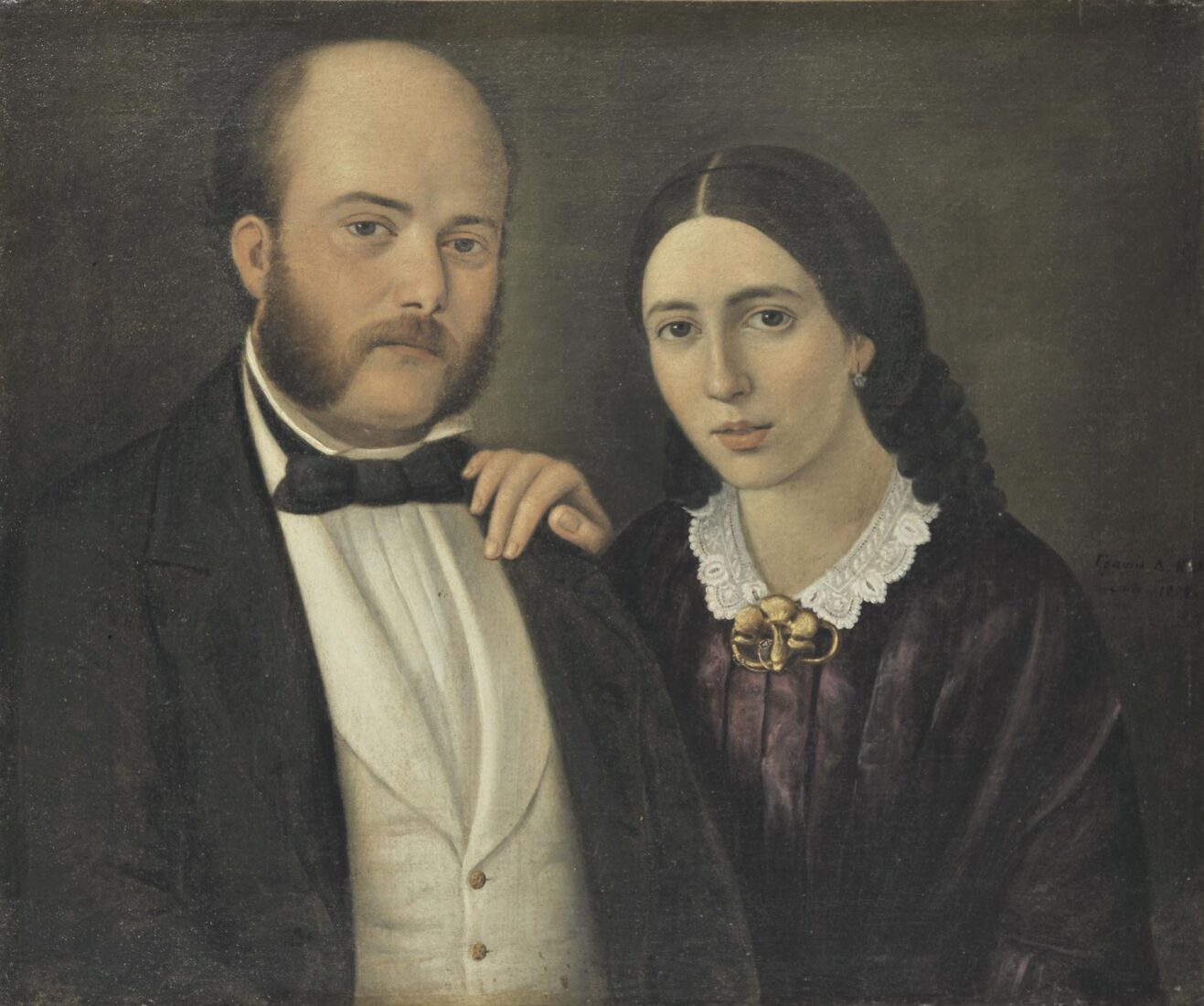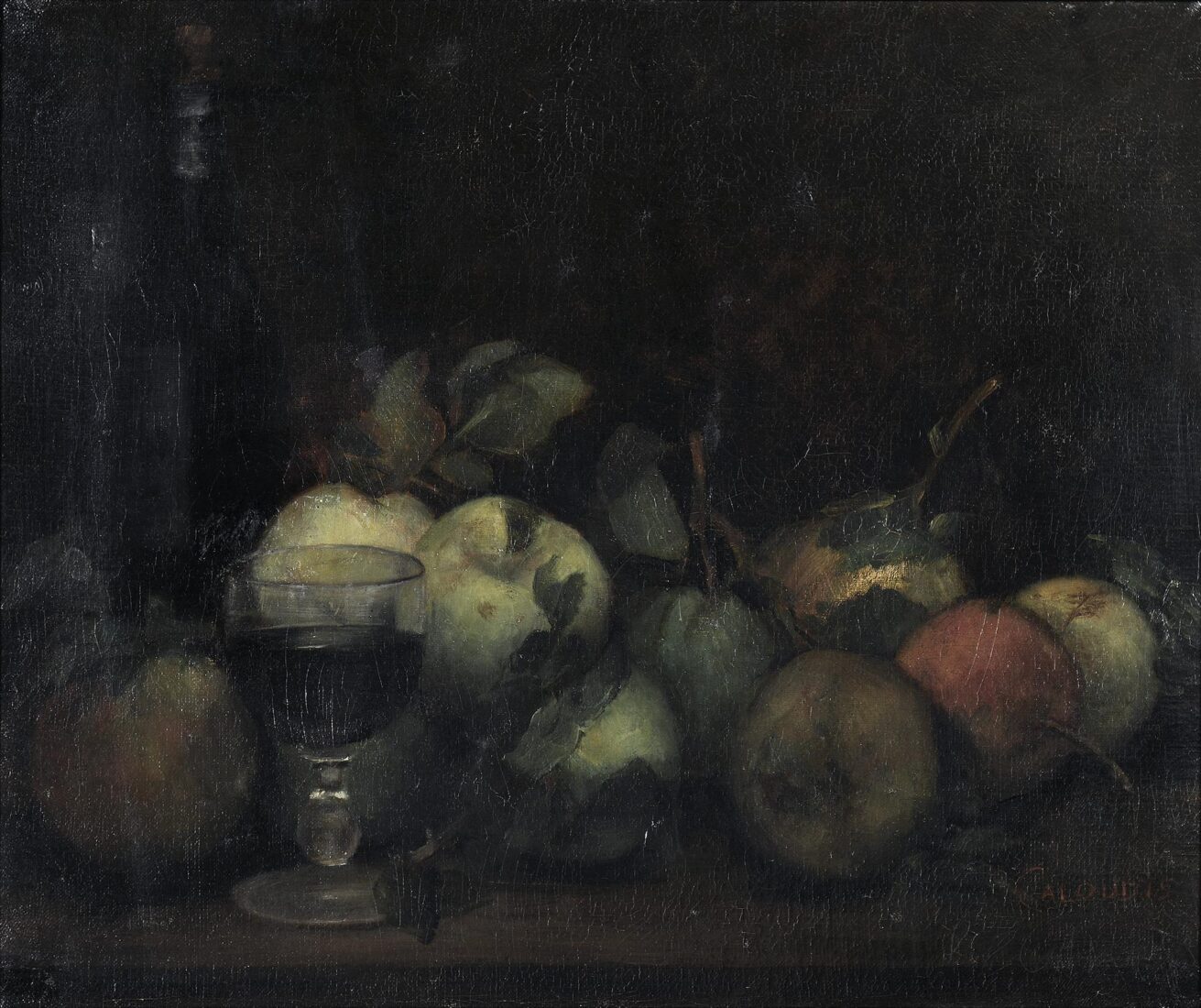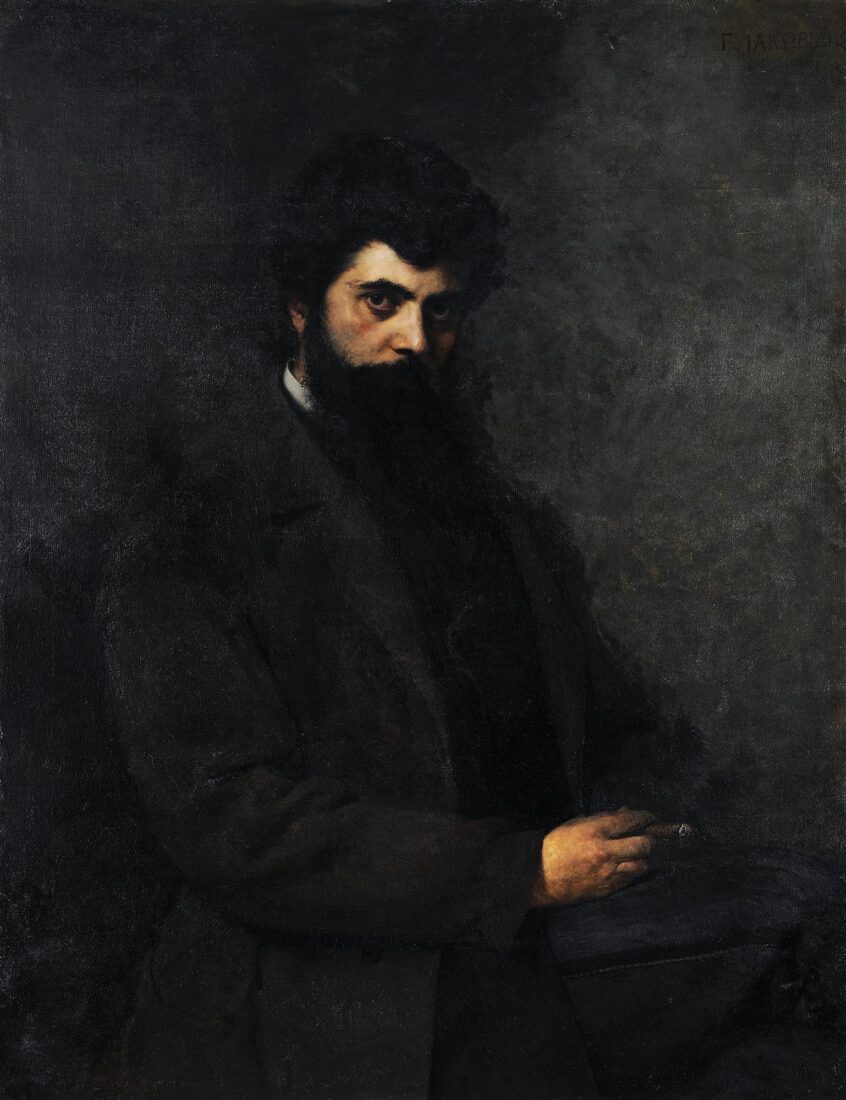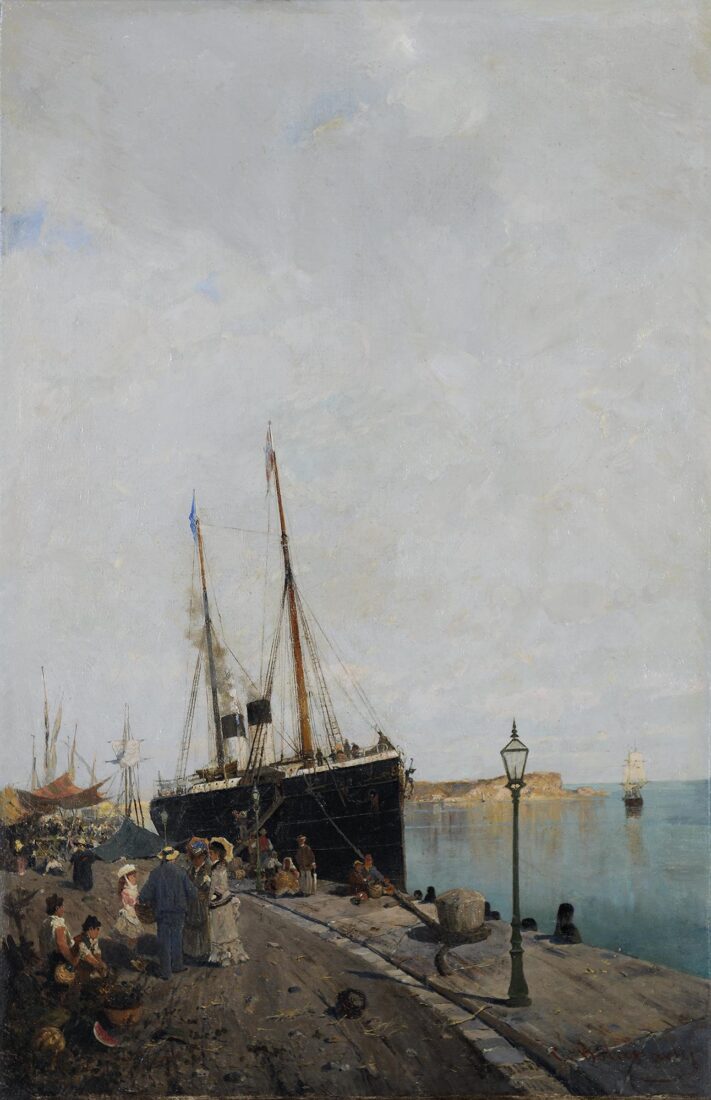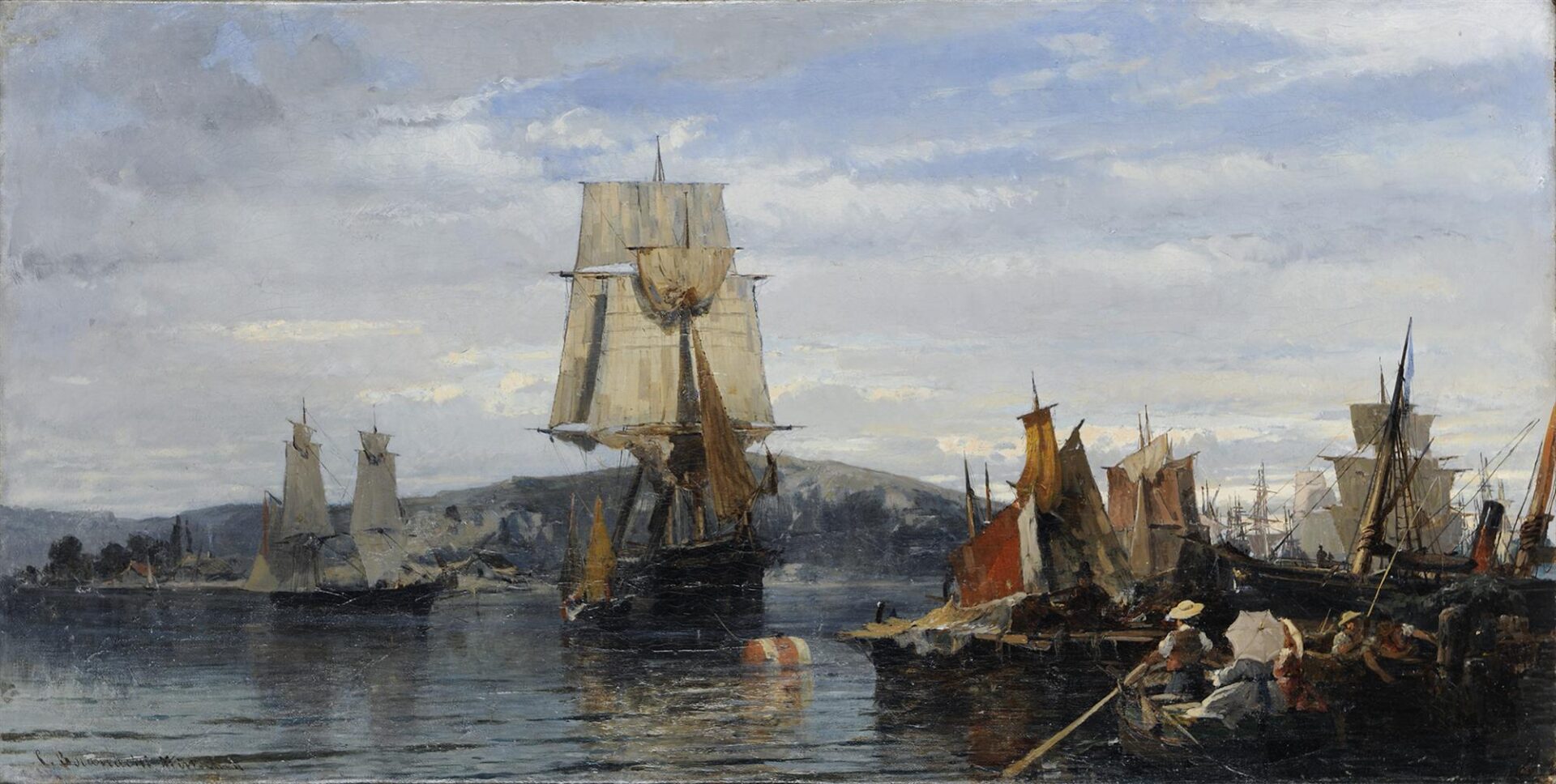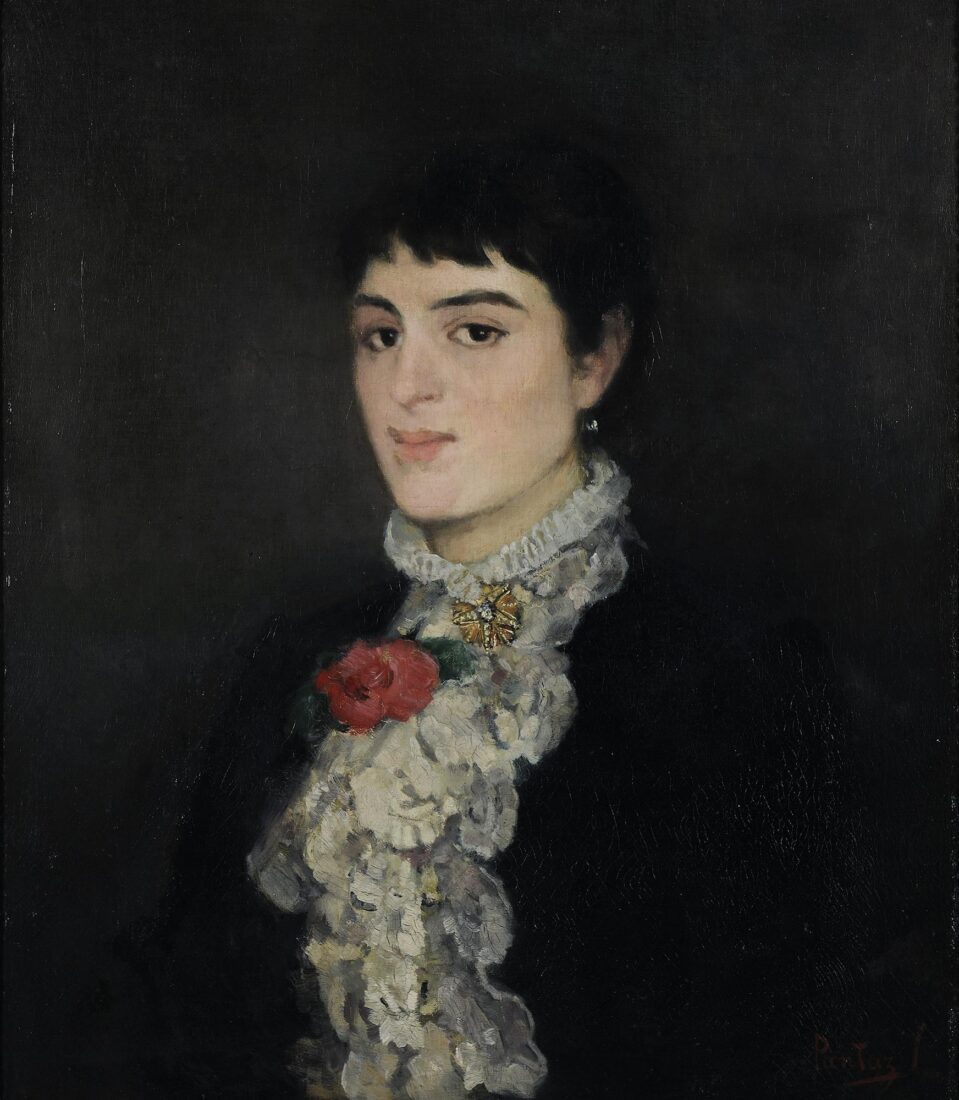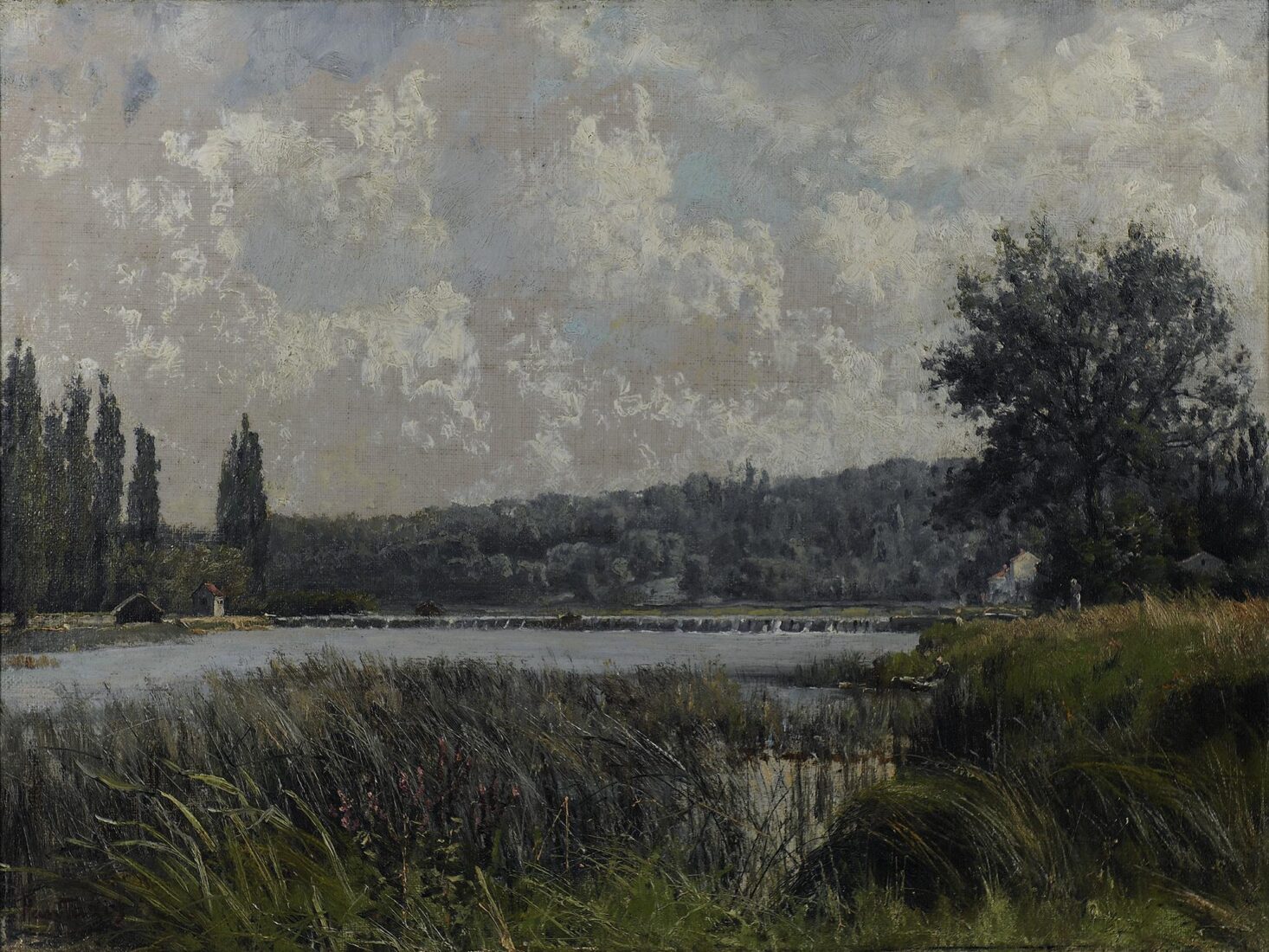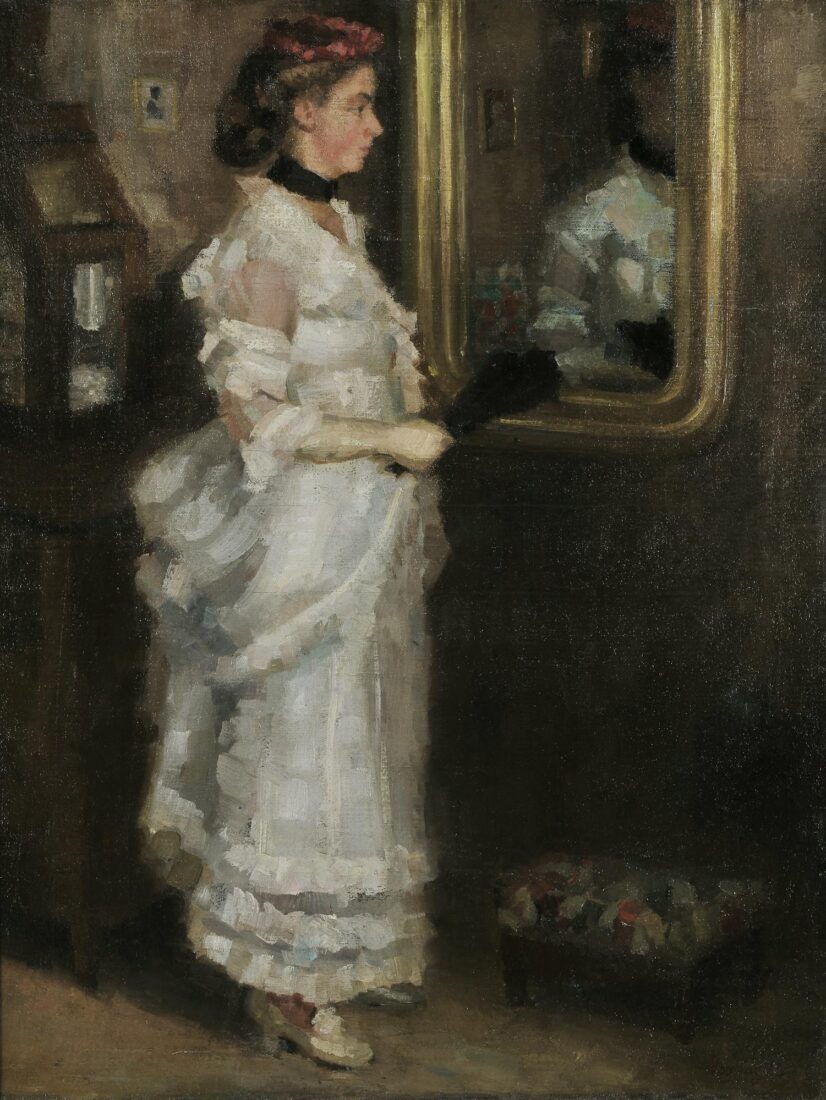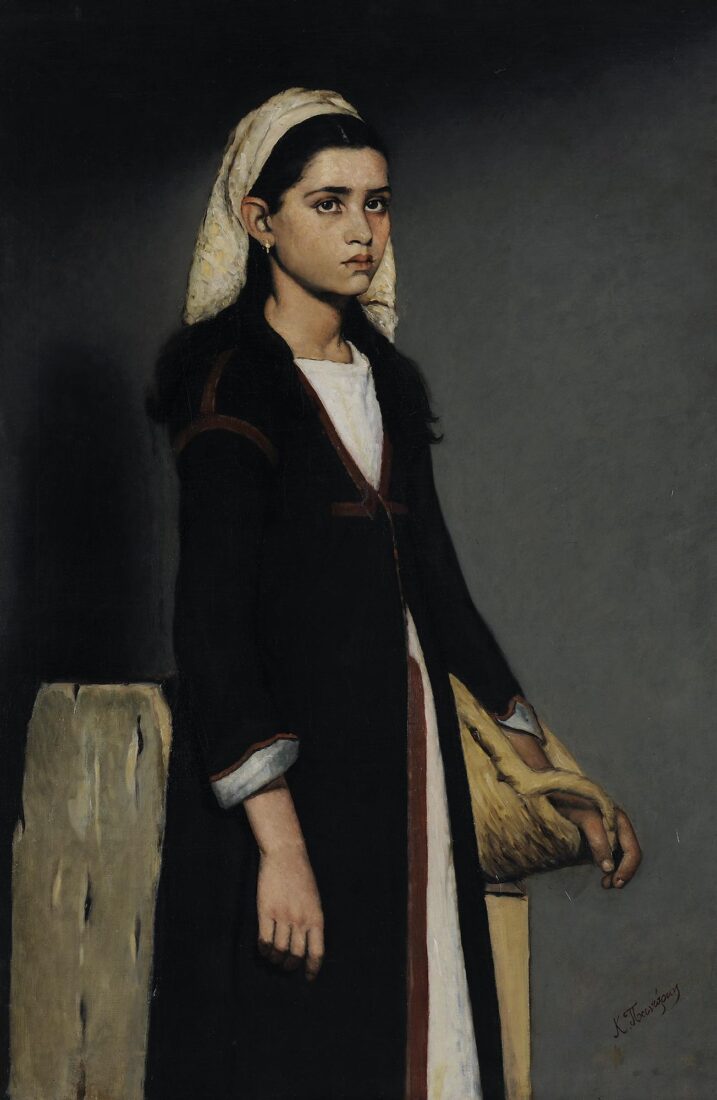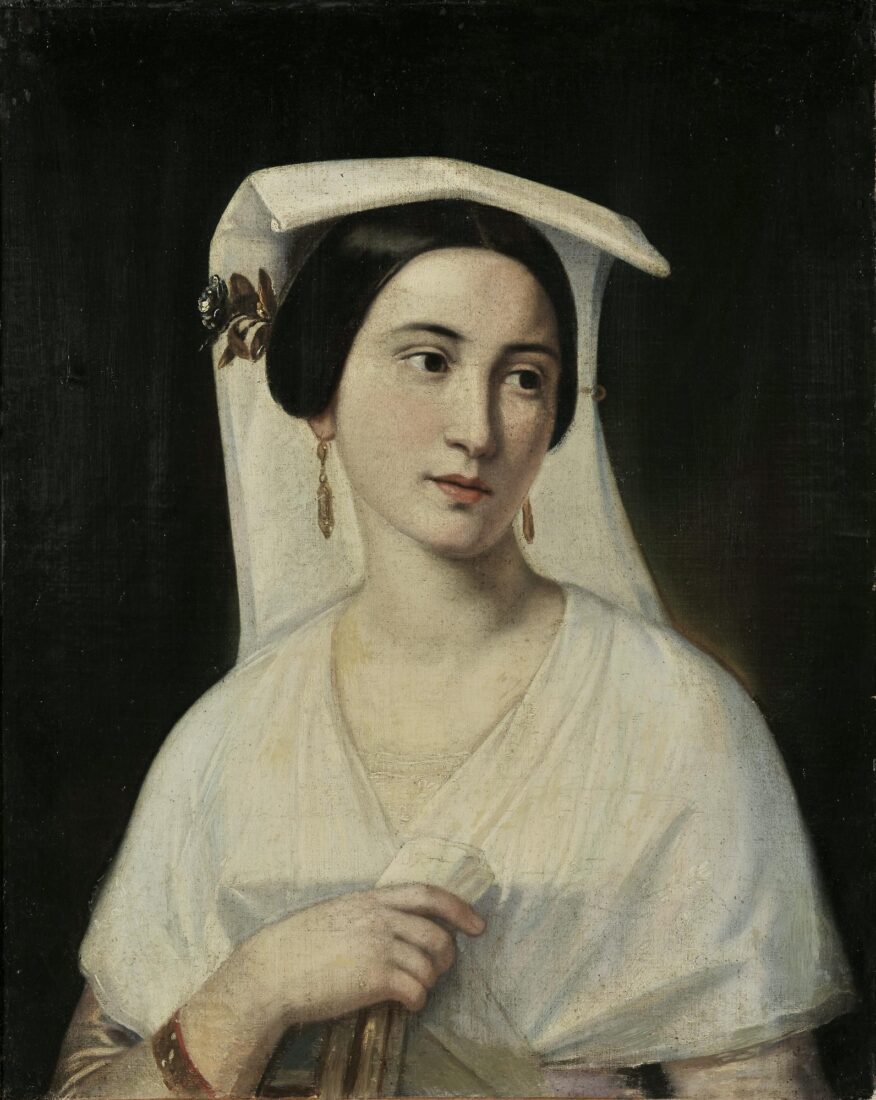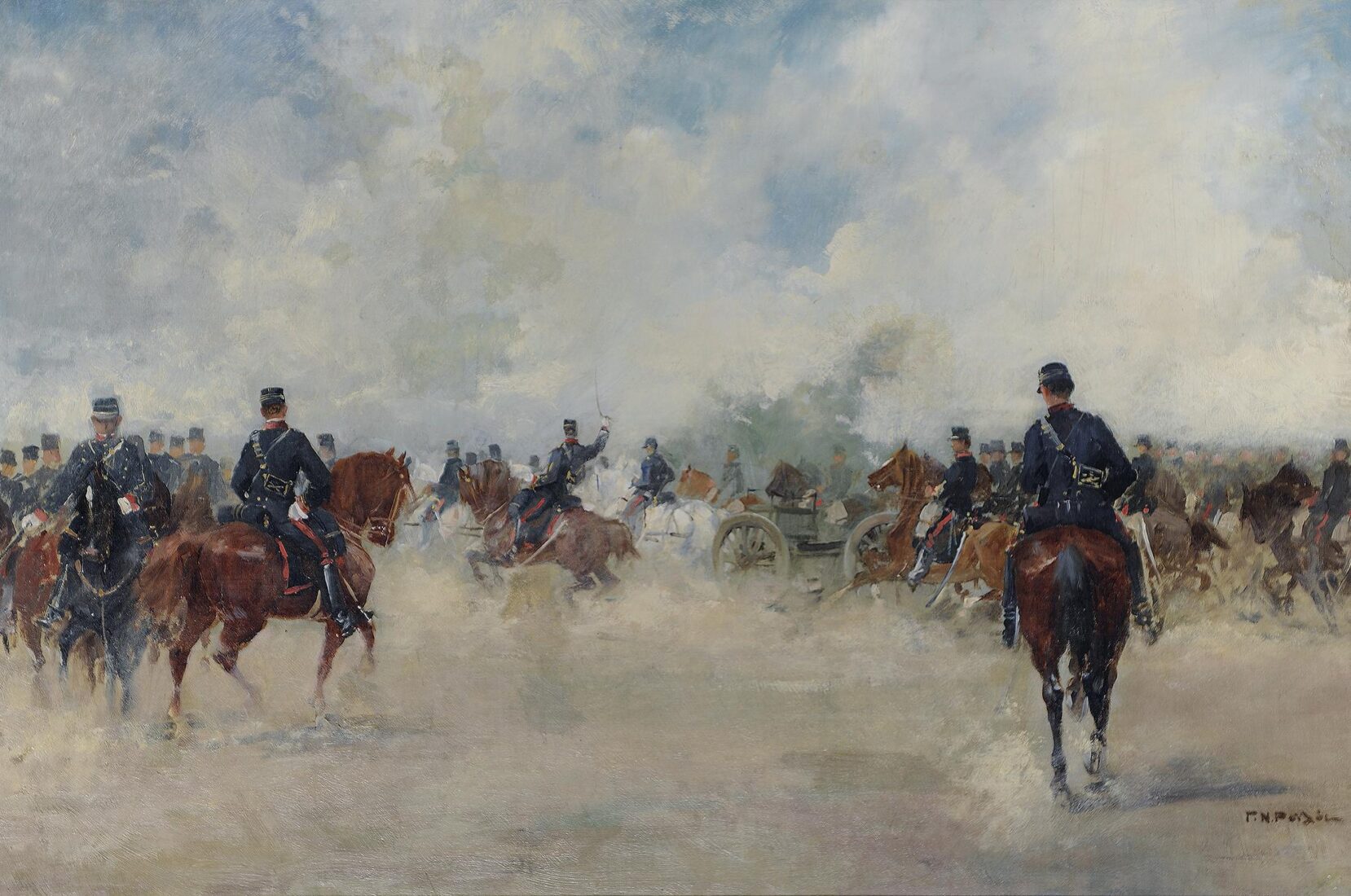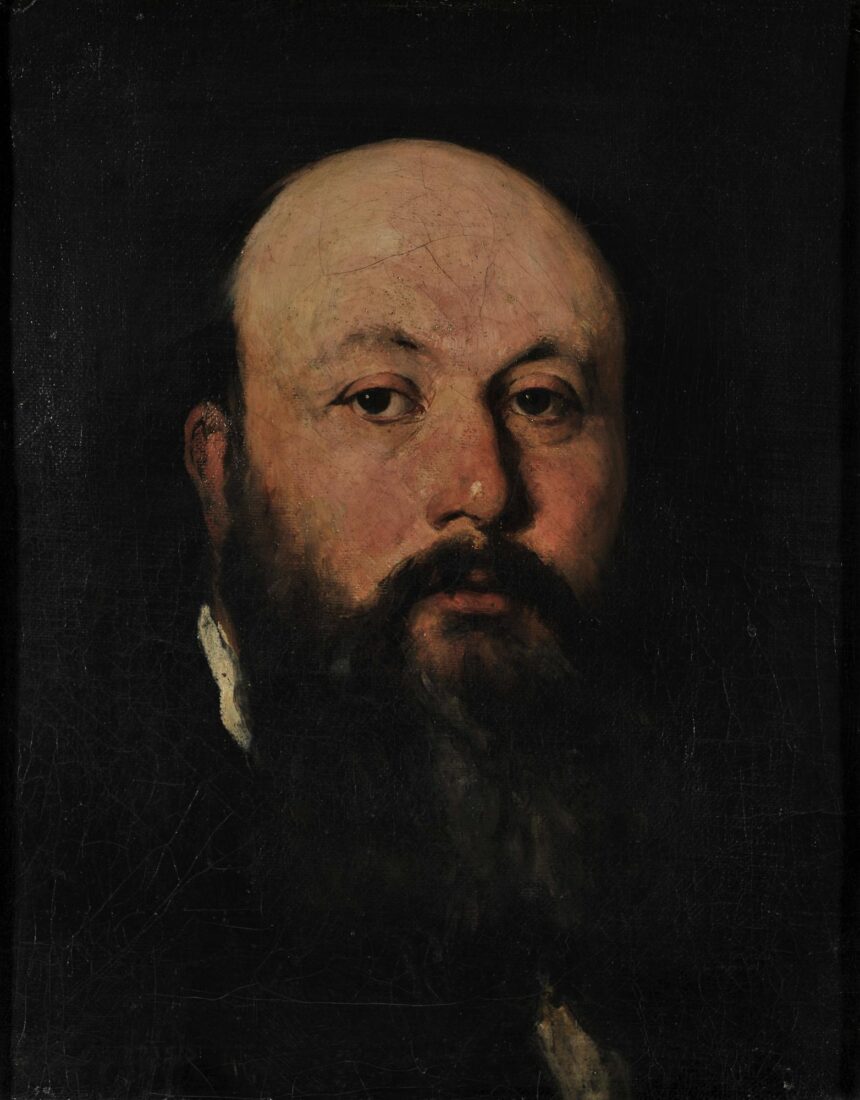

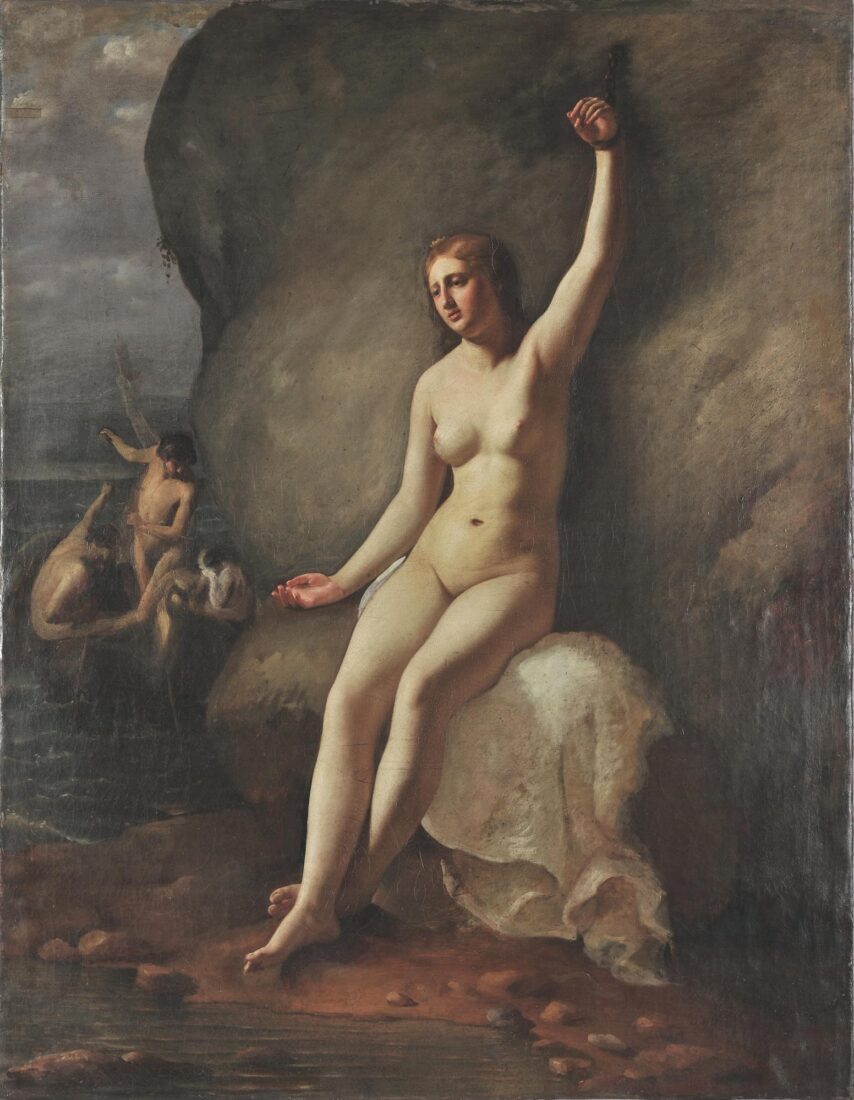
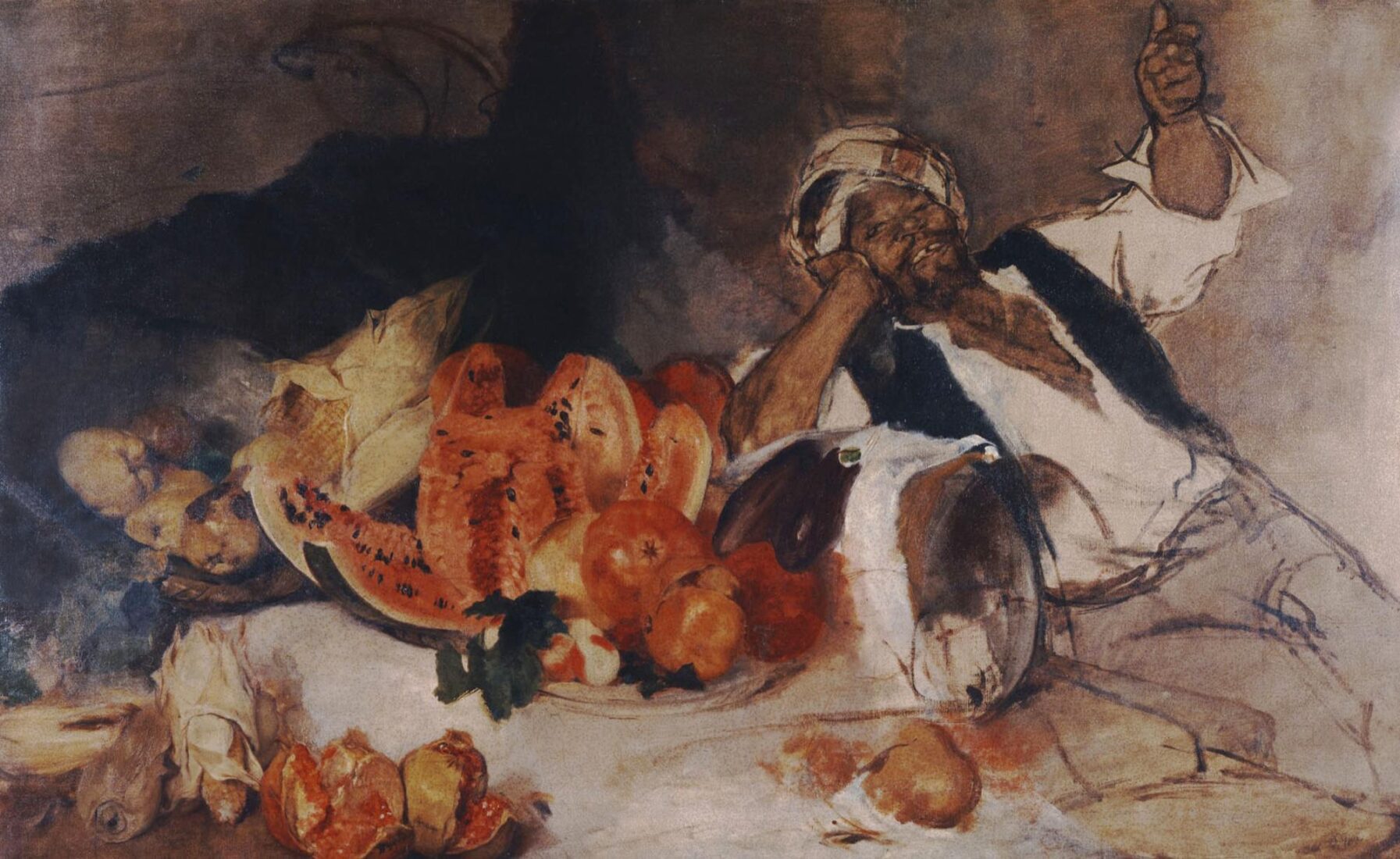
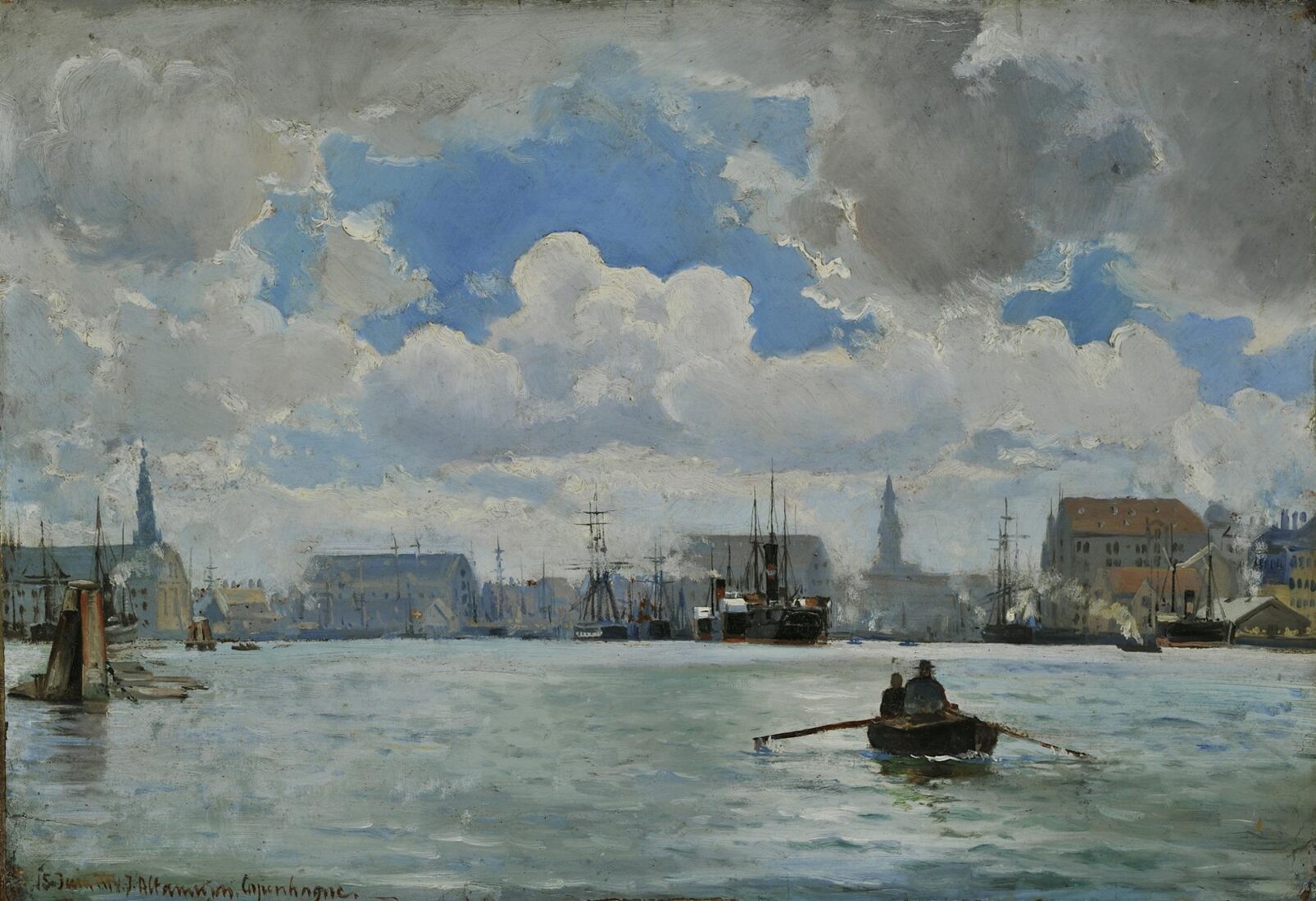
Following his graduation from the Athens School of Arts, Ioannis Altamouras continued his studies in Copenhagen, Denmark, encouraged by King George I of Greece. Although he died very young, when he was still 26, he managed to produce several works which can arguably be considered as true pre-Impressionist art. One of them is the “Copenhagen Harbour”, made in 1874, that is, the same year when the first Impressionist group exhibition was organised in Paris. In this painting, the Copenhagen shore, with the dimly delineated buildings, the castles, the smoking smokestacks and the great ships at anchor, is a dark horizontal line, splitting the painting surface into two. One third is occupied by the sea, where a dark rowing boat can be seen, and two thirds are taken up by a sky with fleeting clouds. Water and sky are the main elements in this painting. In fact, time is the true protagonist here, flying and changing the face of the world from one moment to the next. Using swift brush strokes in order to capture these fleeting phenomena, the painter records the shifts of colour and their iridescence on the waves. Note the great variety of colours in the clouds and see if you can identify their respective reflections on the water. Complementary couples of blue-grey, orange-ochre and violet prevail.
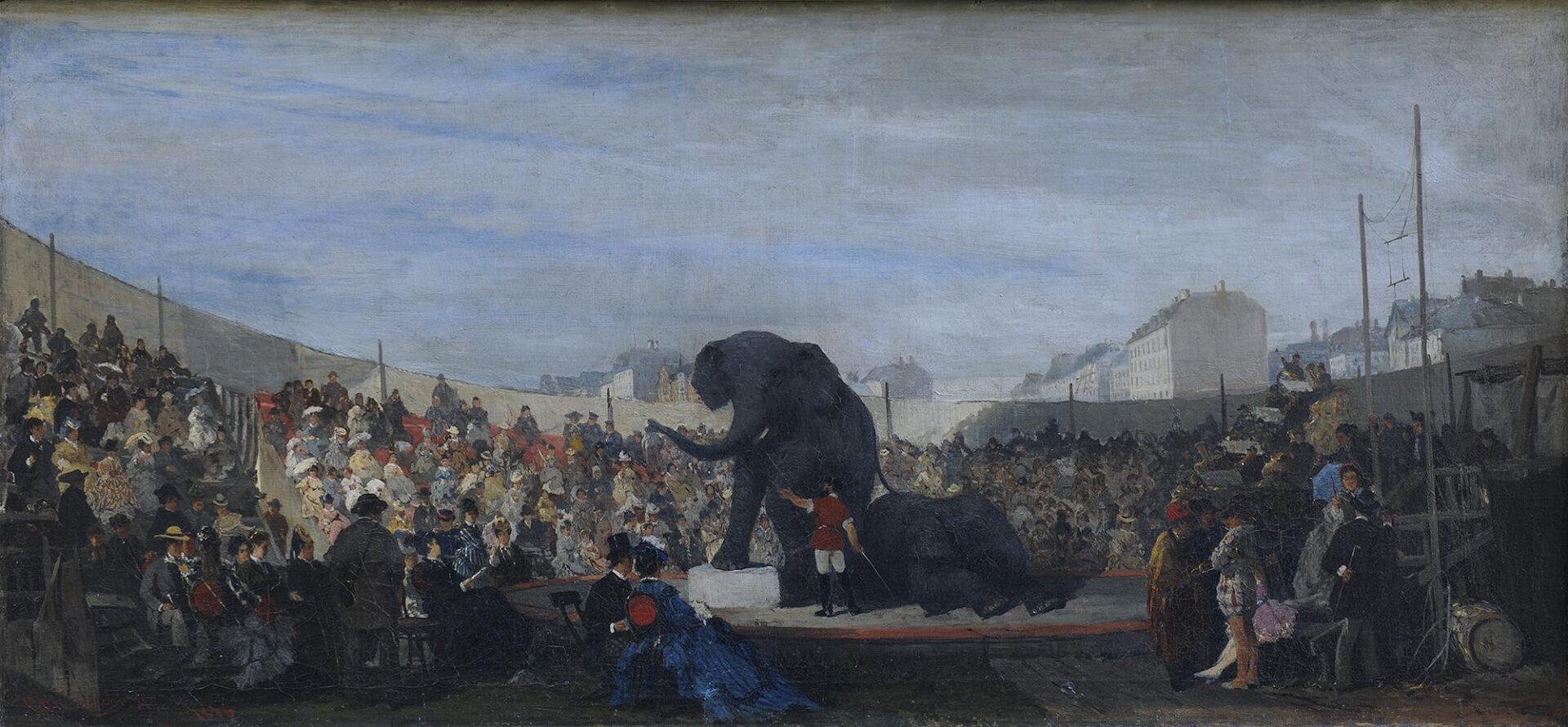
Konstantinos Volanakis is the greatest 19th century Greek seascapist. He mostly painted seascapes featuring beaches, ships, fishing boats, naval battles as well as historical subjects. This work is of a different content. It is a circus scene, such as those still performing today during the Oktoberfest in Munich. Spectators on the packed rows of an improvised theatre are watching the “acrobatics” performed by two elephants on a round stage, led by an animal tamer. The spectators sitting in the foreground, dressed in colourful period clothes and hats, project like dark shadows, while behind them the left part of the amphitheatre is intensely lit, making the colourful crowd glow with a multitude of colours. The shaded right part is rendered in dark tones. The work has been painted in free brushwork of pure paint, suggesting that Volanakis was already familiar with the discoveries of the French Impressionists. Indeed, as early as 1869, the Impressionist movement and Outdoor painting had already begun to become known in Munich. Similar crowd paintings were painted by Manet and Renoir in Paris.
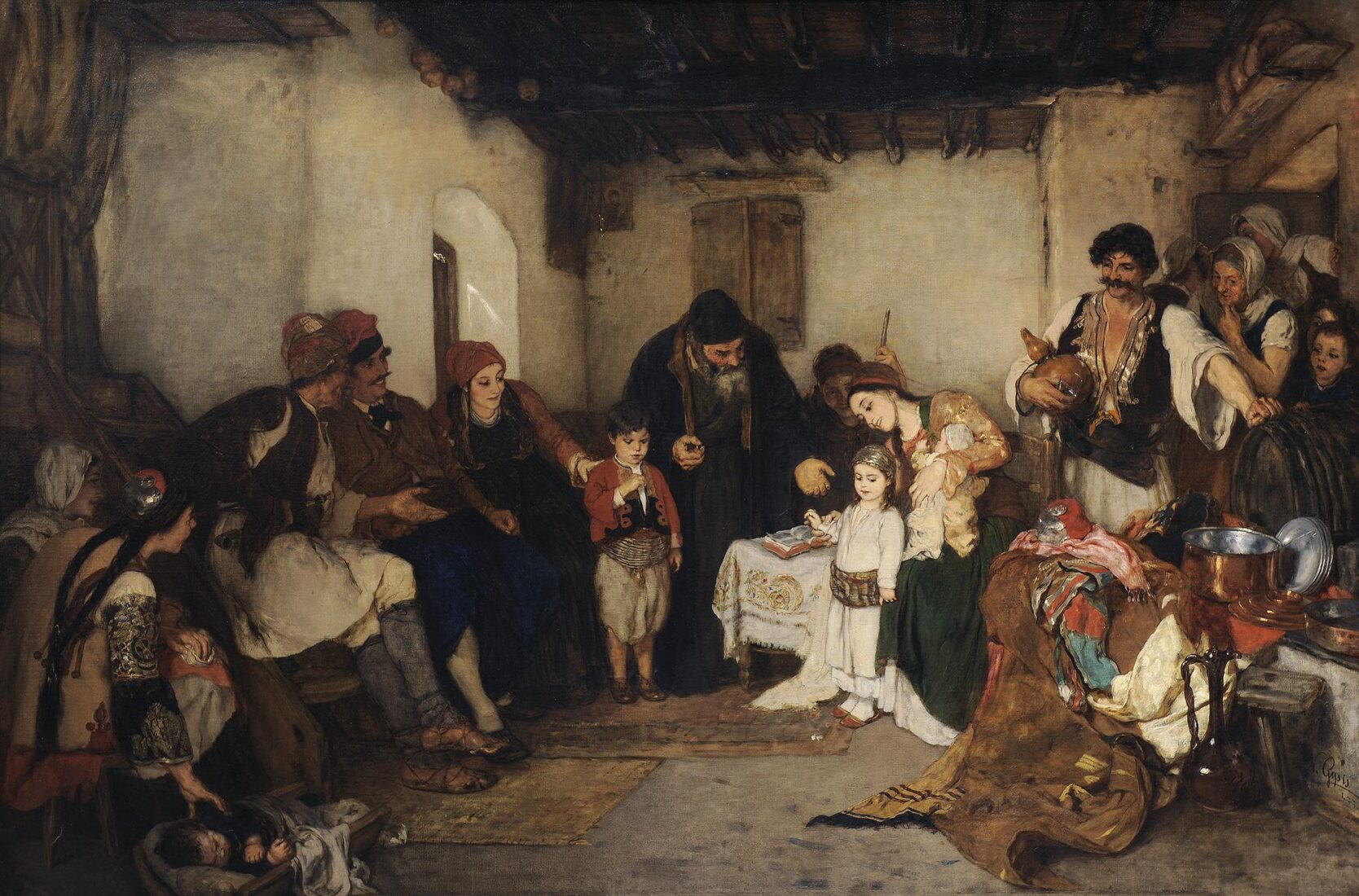
Having received numerous awards, the “Betrothal of the Children”, which exists in two variations, records a custom from Ottoman times. The parents engaged their children while still at a very young age, perhaps in order to protect them from being abducted by Turks. Arranged in a semi-circle in a village home interior, the merry scene is masterfully captured. In the centre of the painting, the priest has already put the ring around the puzzled boy’s finger, while the little girl is looking down, shying away from the old man’s call to come forward for the ring. The parents and other relatives merrily witness the scene. A man wearing the traditional Greek fustanella kilt is holding the wine vessel, a simple water pumpkin, ready to seal the event with a toast. On the right, the artist has placed a pile of utensils and luscious textiles, offering him ample opportunity to show off his skill in capturing profuse colour and variety in textures, from shiny bronze to silk. Warm gold-red hues and white colour prevail.The work was made after Gyzis’ journey-pilgrimage to Greece and the Orient in 1872-3, along with his friend, compatriot and teacher, Nikephoros Lytras. It records his impressions from the colourful world of the Orient, the rich costumes and customs of the Greek people.
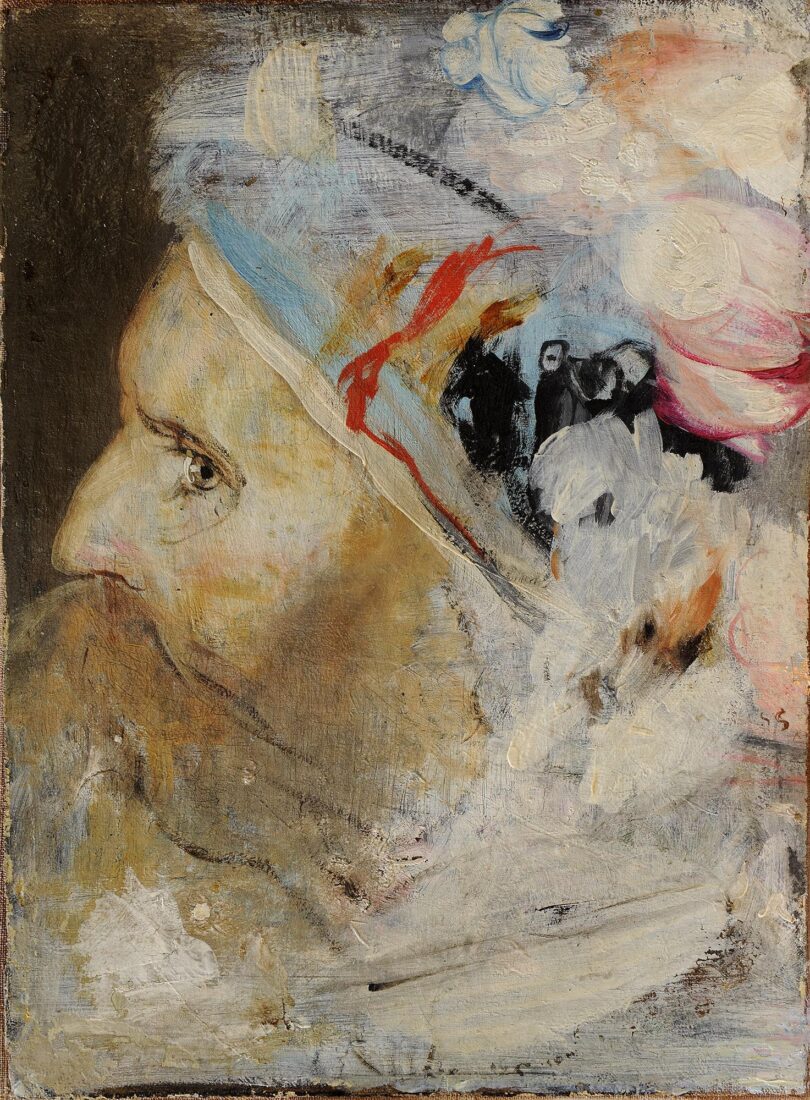
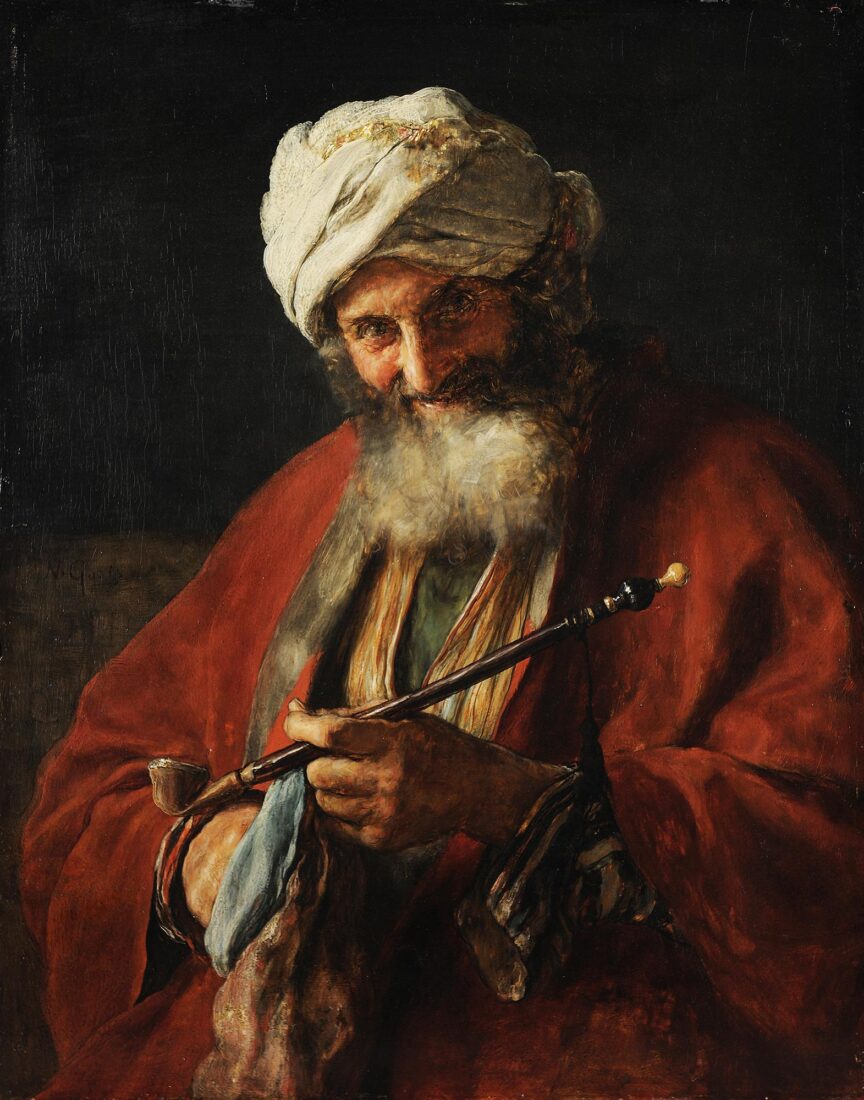
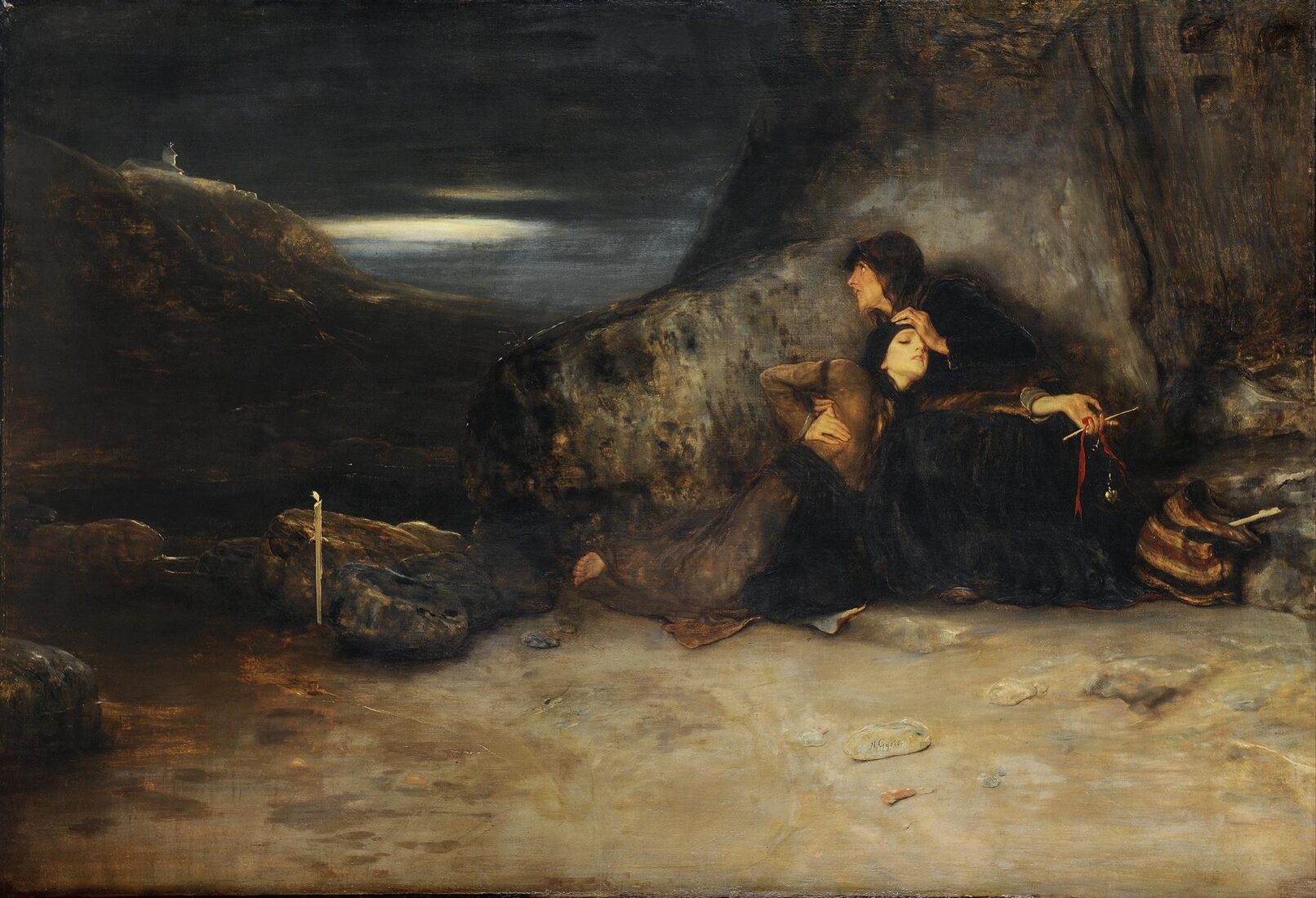
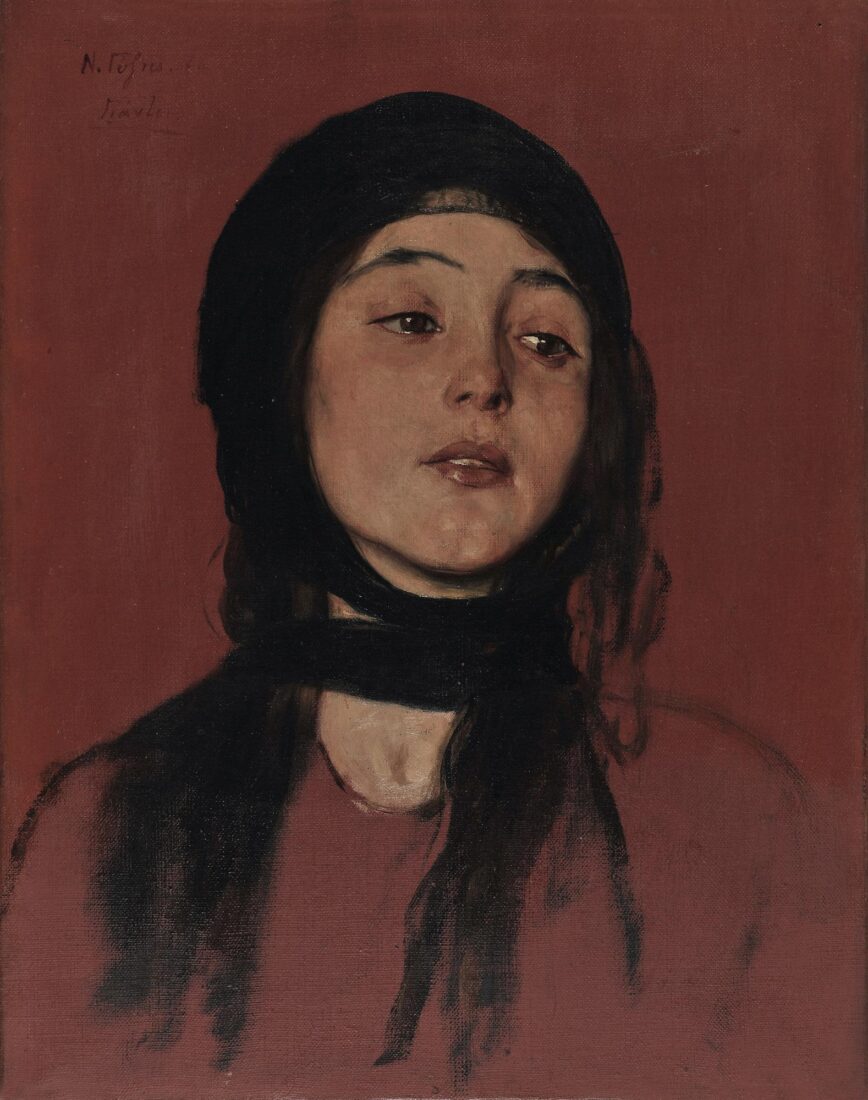
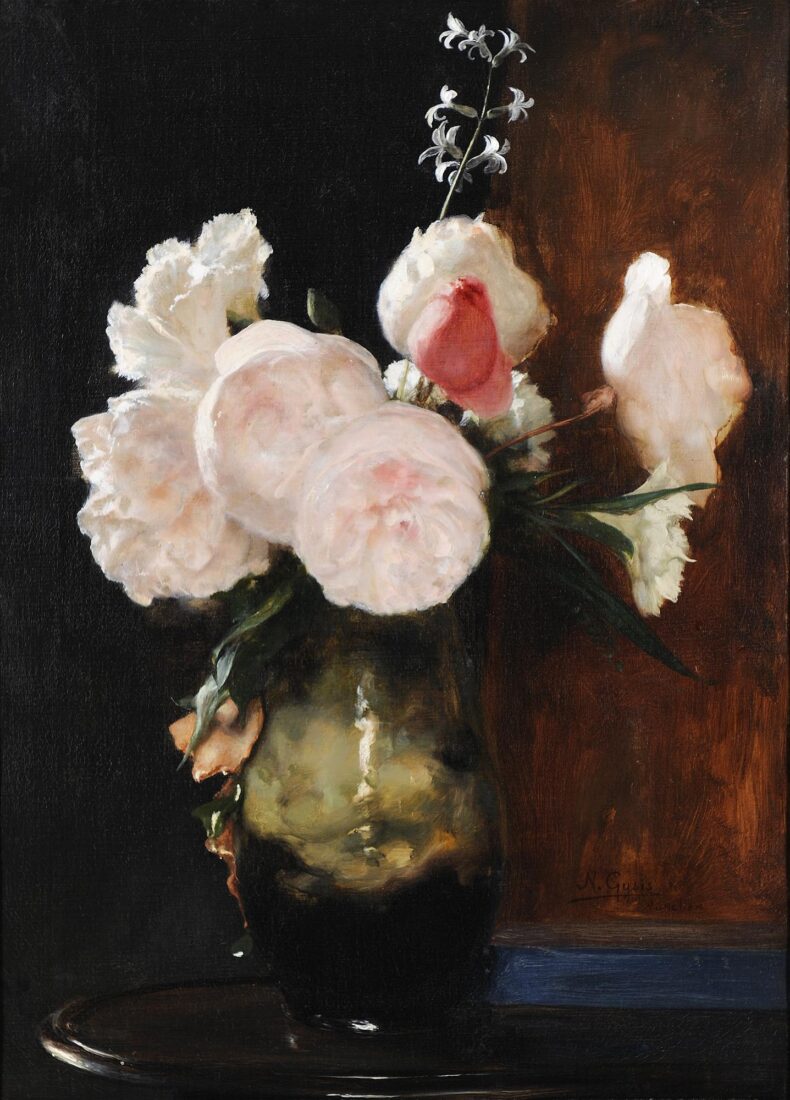
This transparent vase with peonies, roses, carnations and a fine-stemmed hyacinth has been painted by Gyzis with freedom and artistic sensitivity. The fine gradation of pink and above all the interplay of light, which makes some of the hyacinth flowers glow, have been captured with the utmost gentleness. The bright colours of the flowers project strongly against a dark brown background.
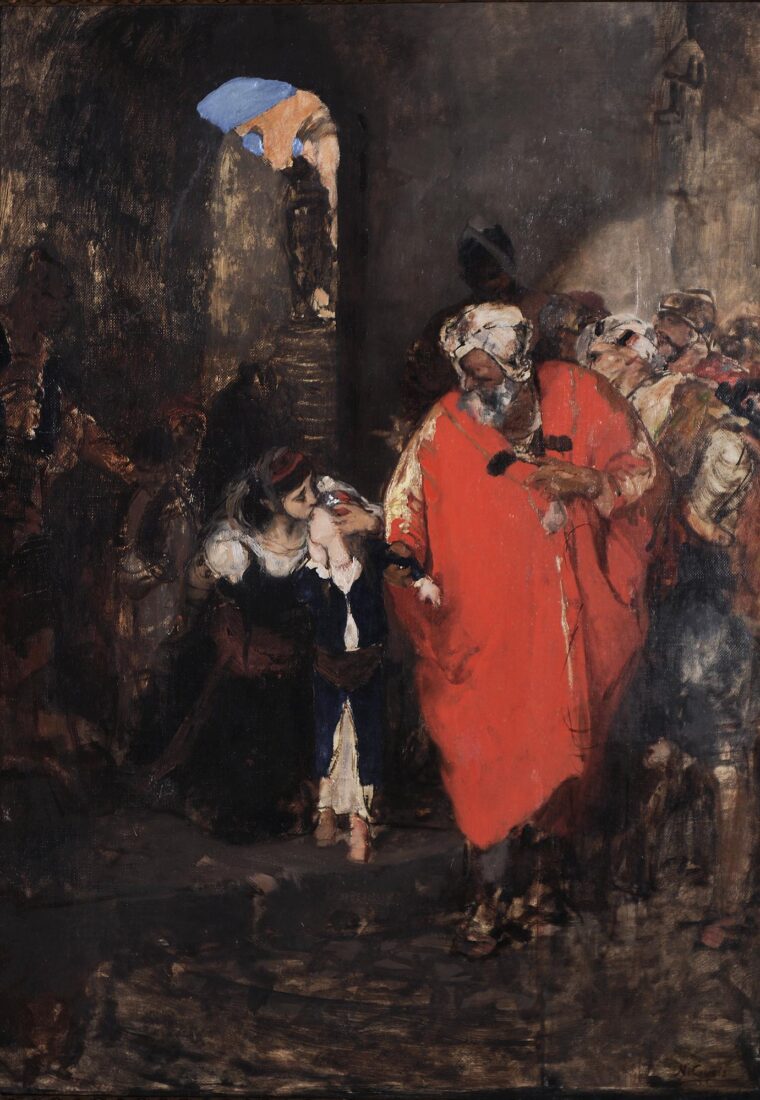
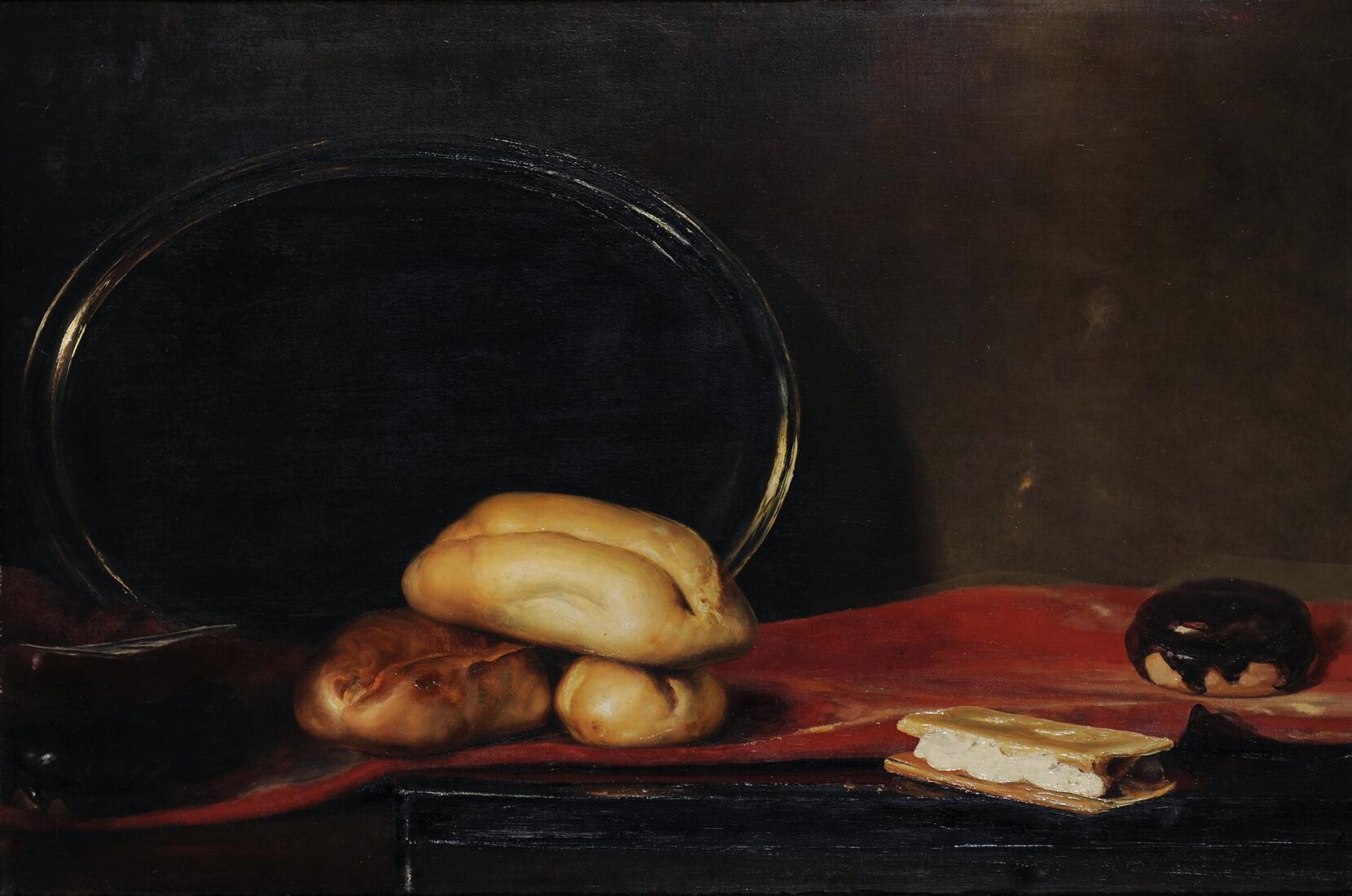
Towards the end of his life, Gyzis produced certain exquisite still lifes in a break from painting large subjects. In this still life, an oval silver plate reflecting a dark light, three well-baked bread loaves and two pieces of pastry are laid on a reddish tablecloth. An opportunity for the masterful artist to prove his hand in capturing textures and creating compositions of minimal colour, in which dark hues along with red colour and the gold colour of the bread prevail.
